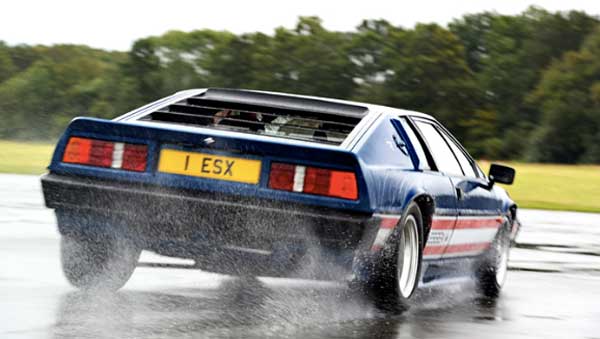
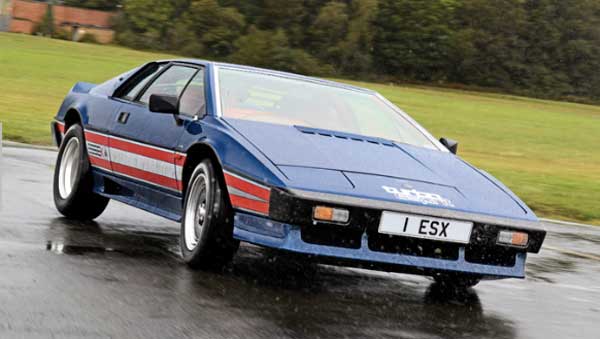
Top Gear - Lotus Esprit Turbo
Hammond drives the icons
Lotus Esprits
Supercar styling inside and out, pop-up headlights, ruched leather...
this is the Lotus Esprit
Top
Gear Magazine, April 2013
by Richard Hammond
photography by Justin Leighton
The Lotus Esprit Essex. Hold on just a minute and think about that. Essex. You've got a special edition celebrating the launch of the first-ever turbocharged version of your flashy, British supercar coming up, and you need a name. Having rejected, ooh, I dunno, ‘The Turb-o-liser', ‘Turbo Death Ray Special', ‘King Dong' and ‘Mighty Excalibur', Lotus went for ‘Essex'.
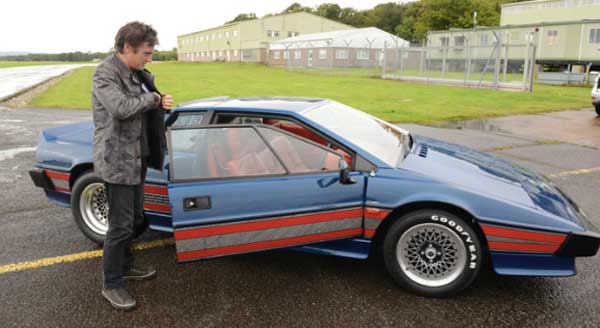
The guys had their reasons: keen to cash in on F1 glamour, they linked the car with their F1 sponsor, Essex Petroleum. I'd have gone for the Lotus Esprit Petroleum myself, but, hey...
There are other reasons for the Essex moniker being a good fit: one look at the interior is enough to back it up as an entirely appropriate call. That's a lot of orange leather; it could be the face of any of those Essex people on TV. And it's been ruched to within an inch of its life. Settling into the driver's seat is like sitting on the wrinkled face of an Essex 60-a-day smoker. I should imagine. Once in, though, it's not all bad news.
Peel your eyes away from the orange ruched leather, and look at the stereo. It's got a cassette player, and it's mounted on the ceiling. It's like being on the flight deck of a jumbo jet. My God, but this must have felt special in 1980, when, don't forget, everything was pretty awful. And then this comes along. It's bigger, brighter and bolder than just about anything else. And, best of all, it's British. If that doesn't get your kipper tie twitching, nothing will.
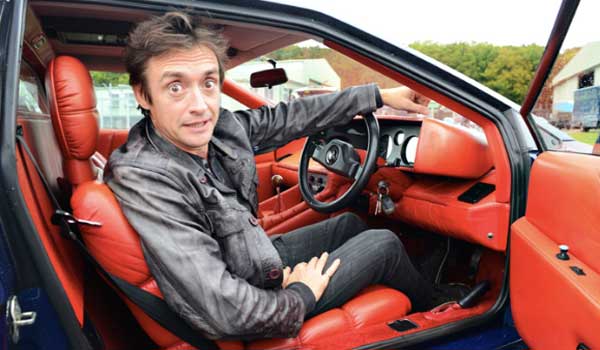
The Essex was based on the S3, the third incarnation of the Esprit. The interior of this limited-edition special was, like the body, the work of Giugiaro. But this thing was far more than a restyle. The Esprit had been around since the S1 version arrived in 1976. Yes, we'd all fallen in love with it when Bond drove it under the sea and shot a helicopter with a frankly ridiculous missile thingy, but that was a long time ago, man, things have moved on.
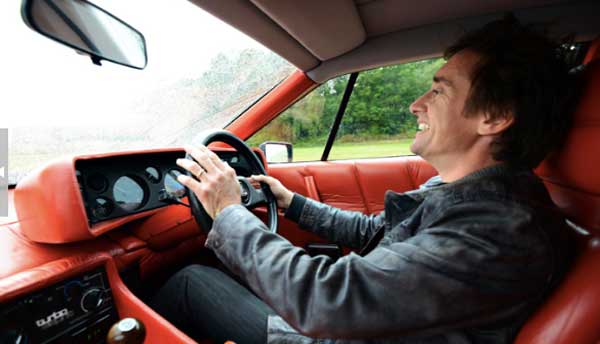
This was the first turbo charged Esprit, it had a dry sump engine, the chassis and rear suspension were redesigned, and the new Giugiaro-designed aerodynamic bodykit made the whole thing look bigger, bolder and angrier. However, it struggles to sound anything special when you fire up the four-cylinder, 2.2-litre engine behind your head, and the whole thing feels fantastically dated. Plus, the gear linkage is a very long way indeed from the rifle-bolt action you might dream about... The outlandish interior creaks and groans a bit, the switchgear is clearly lifted from other, more pedestrian cars, and, after five minutes in the ruched, orange leather cocoon, you can't help but suspect you might be rolling around inside an elephant's scrotum.
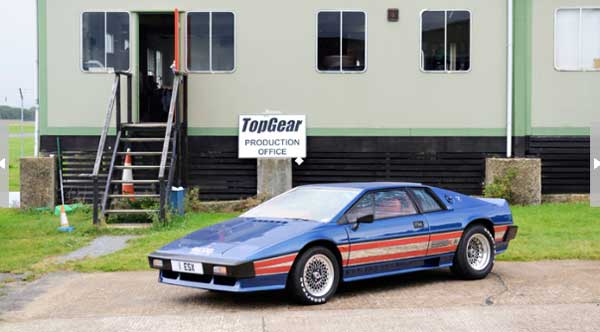
What else? It's quick enough to keep you entertained, but never to startle. It makes 210bhp - not a huge number - but it's light at just 1,220kg, so 0-60mph takes around six seconds, and it'll top out at 155mph.
But this is still the original ‘wedge’, if you ask me – a proper supercar with pop-up headlights and everything. And even in this outlandish colour scheme, it’s a gorgeous-looking thing. True to Lotus form, it’s light and makes the very best use of its power. And it’s got history and pedigree; it was around in one form or another for 28 years. There are better cars, more sophisticated, ground-breaking cars, but the Esprit has properly earned its place in the halls of motoring folklore, and to own one, any version of it, will always be to own, and drive, a legend.
